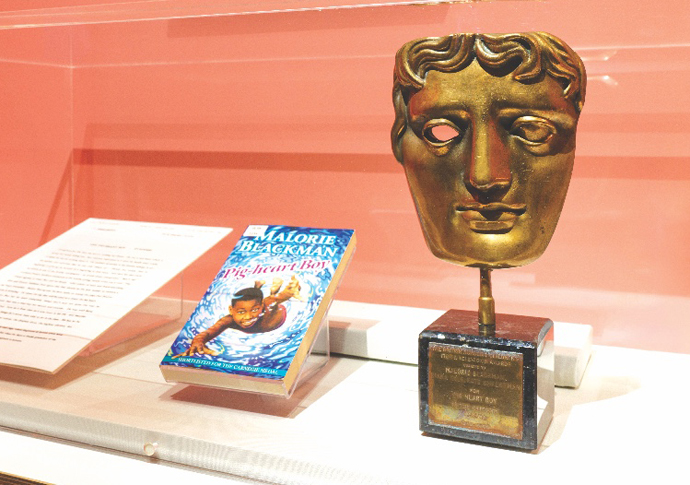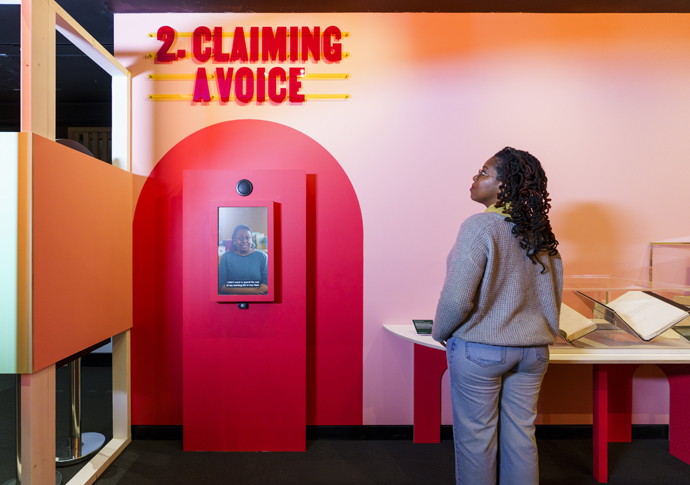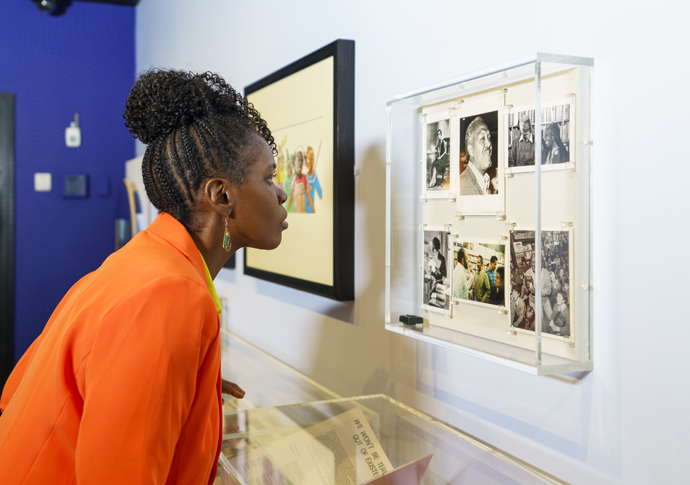Don’t give up!
Jane Clinton sees a British Library exhibition that traces the story of author Malorie Blackman’s glittering career
Thursday, 1st February — By Jane Clinton

Malorie Blackman [Pål Hansen]
NEATLY filed in a ring binder are 82 rejection letters from publishing houses. The message was clear: thanks, but no thanks. Despite this, the recipient didn’t give up.
And it’s just as well, as that fledgling author was Malorie Blackman, now one of our best-loved writers.
She has written more than 70 books, including the international bestseller Noughts & Crosses series, and her work has been translated into more than 15 languages.
In 2008 she received an OBE for her services to children’s literature and from 2013 to 2015 she was Children’s Laureate. She won the PEN Pinter Prize in 2022, becoming the first author of children’s and Young Adult books to receive the accolade.
He appeal is wide. Stormzy is a fan and has said the Noughts & Crosses series are his favourite books and her work has crossed over into TV and film. In 2018 she became the first black writer to write an episode for Doctor Who.
Now Malorie’s life and career are the subject of a free exhibition at the British Library. The exhibition is divided into four sections: Representation, Claiming a Voice, Noughts & Crosses and Legacies, and each section begins with an introductory film narrated by Malorie.
Among the items on display are comics, manuscripts and books alongside loaned typescripts, editors’ notes, newspaper cuttings and artworks.
Born in Merton, south west London, Malorie grew up in Lewisham in a busy household with four siblings. Both her parents were from Barbados, coming to Britain as part of the Windrush generation. Her father Joe was a bus driver and her mother Ruby worked in a factory. When Malorie was still a young child Joe walked out on the family.

The Malorie Blackman exhibition at the British Library includes her Bafta for the TV adaptation of Pig Heart Boy
Struggling financially, life was hard. In the exhibition, we see a picture of the homeless shelter Malorie lived in when she was 13. Next to it we also see a photo of a library where from a young age she would escape to lose herself in books. But the more she read, the more she became aware people like her never seemed to feature in the stories.
Aged 12 she had asked her history teacher why they never learned about black scientists, pioneers and inventors in lessons. The teacher’s reply? “Because there aren’t any.” As we learn, Malorie “was sure that couldn’t be true”.
It would be one of a number of hurdles, misdirections and blatant lies Malorie would encounter.
There was also the time she said she wanted to study English at university and become a teacher.
Her careers advisor refused to support her application, telling her “black girls don’t become teachers”. Malorie opted for Business Studies instead. Illness interrupted her studies, so she took a job in computing and went on to become a computer programmer.
In her 20s and craving a change, she took evening and weekend classes (among them saxophone and acting lessons). But it was the writing class that lit her creative flame.

And so began her mission to become a published author.
Eventually in 1990, her first work, Not So Stupid!, a collection of horror and science fiction stories for young adults, was published.
Among her many inspirations, Malorie recalls the “profound” impact of Alice Walker’s The Color Purple, which she read aged 22.
“Alice Walker opened a door onto the world of the literary possible. She was a black woman author. They existed!”
Real-life events have often inspired her work.
The mishandling of the Stephen Lawrence murder case by police and the treatment of Lawrence’s family appalled Malorie. She decided to channel her anger into writing about racism, and so was born the Noughts & Crosses series.
It has been adapted in various forms for television and the stage as have many of her books.
The 1999 she won a Bafta for the TV adaptation of Pig Heart Boy, takes pride of place in the exhibition.
Alongside Malorie’s story we see some of the early pioneers in independent black publishing in the UK including John La Rose and Sarah White who founded New Beacon Books; Eric and Jessica Huntley who established Bogle-L’Ouverture; and Margaret Busby, founder of Allison & Busby.
There are also comments and reflections throughout from students from Regent High School in Camden.

The British Library collaborated with them to create new works inspired by Noughts & Crosses.
They helped shape how the exhibition was presented and their responses, poetry and artworks feature all feature.
But perhaps of all the exhibits, in this lively and important exhibition, the most affecting is a book by another author, Alice Walker.
In 1989, when Malorie was trying to get her first book published, she met the acclaimed writer at a book signing.
In need of inspiration, she asked the author to write a simple three-word inscription in her copy of The Temple of My Familiar. The three words? “Don’t give up!”
• Malorie Blackman: The Power of Stories is at the British Library until February 25. Visit www.bl.uk/whats-on/